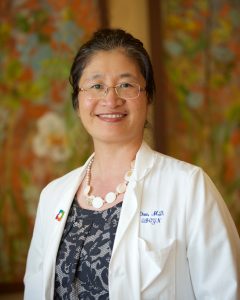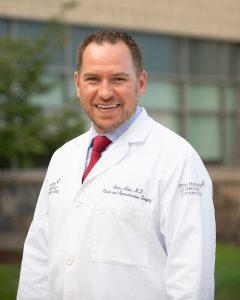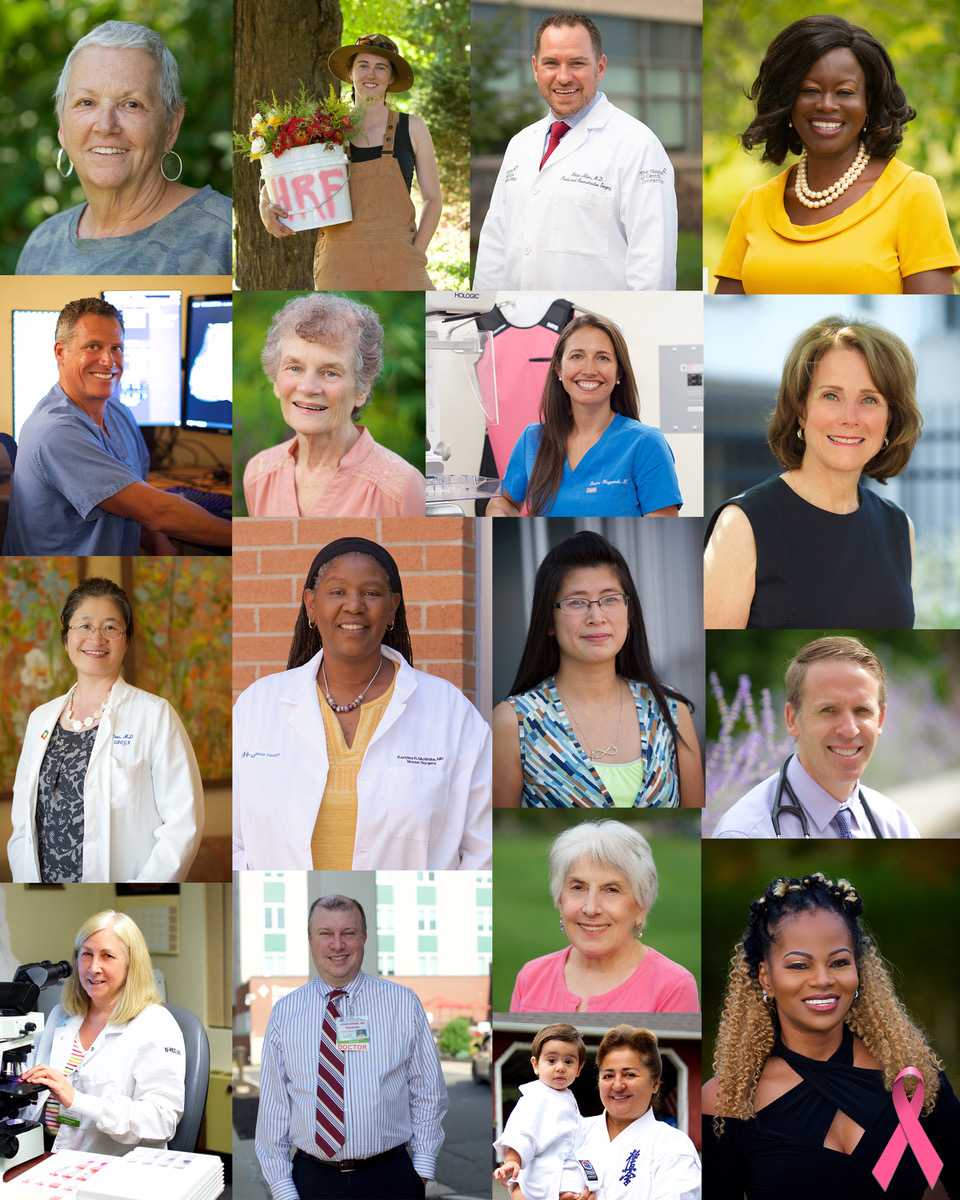Women’s Health and Breast Cancer Awareness
By Anna Zuckerman-Vdovenko
Demystifying Breast Cancer
“Above all, be the heroine of your life, not the victim”
–Nora Ephron
October is Breast Cancer Awareness Month, a campaign designed to encourage women to take time to focus on breast health. It also is a perfect time for women to remind themselves of the importance of their overall health. Women are busy being students, professionals, athletes, artists and mothers. They also tend to be caregivers to others before attending to themselves. Breast cancer is the most common cancer in women, afflicting one out of eight in the United States. Early detection is the key to successful treatment and a good prognosis.
HEALTHY WOMEN
According to Connecticut author Kristin Pomeroy, women need to have a healthy routine to stay well and be happy. Regular exercise; eating low-fat, low-sugar, organic foods; getting seven to nine hours of sleep; and finding quiet time to calm the mind are highly recommended. Smoking, extra weight, and indiscretions with drugs and alcohol put women at higher risk of heart disease and cancer.
ROLE MODELS
No matter the generation, women empower each other by demonstrating their values and gifts. Rosemarie Beskind and Priscilla Hurley are octogenarians who enjoy friends, family and community activities. They both made the conscious decision, despite being widowed, to continue their active lives. Beskind’s recipe for happiness is straightforward: “When I bring out the best in others, I bring out the best in myself.”
Charlene Swinton is a vice president of a business and so charismatic and energetic that no one can ever guess her age or imagine the difficulties she faced during her youth. Swinton feels it is essential to use natural products and to eat wisely.
Shihan Farzinzad runs a beauty spa in Avon, Conn. and finds joy in helping women to relax and feel their best. But apart from that, this loving grandmother is a multiple black belt karate trainer who believes that women can improve their physical and emotional health through this kind of exercise.
An organic farmer from Morris, Conn., Enya Cunningham follows a healthy diet herself and brings organically farmed food to our tables. Following an organic diet, we often see that skin problems, autoimmune diseases and strange allergies improve greatly.
Carol Madore, a breast cancer survivor, is resilient as she recovers. She advised those who begin on that journey to, “Rely and trust your medical team. Lean on family and friends for support. Believe in yourself, you are strong.”
WOMEN’S TOP PRIORITY HEALTH ISSUES
The most common cancer in women is breast cancer; the rate of breast cancer diagnosis in Connecticut is the highest in the country. This is likely due to the robust breast surveillance program in our state. We also have passed state legislation requiring insurance companies to cover mammograms, breast ultrasound for more dense breasts, breast cancer surgery, additional treatment and even reconstruction.
PREVENTION IS PART OF THE CURE
Regular visits to the doctor and following advice on screenings for illnesses so they can be treated in the earliest stages is another crucial factor in the quest for well-being. The first line of detection begins during annual checkups with a woman’s primary care professional as well as with her obstetrician/gynecologist (ob-gyn). Briana Huguenel of Women’s Comprehensive Healthcare screens her patients for cervical cancer with annual Pap smears, a simple test that has saved many lives due to early detection and treatment.
Dr. Huguenel explained that gynecological cancers—such as cervical, vulvar, uterine and ovarian—can be found early when women go to their gynecologists as soon as they notice any changes. Women should know their body well and without hesitation head to their gynecologist to report anything irregular.
Dr. Claire Zhou, a gynecological surgical oncologist, operates on women with cancer or other lesions in the ovaries, vaginal wall, cervix, vulva and uterus. She asserted that staying fit can be a factor in women’s health. This is because breast and endometrial cancers have a very common risk factor: extra weight. When a woman is obese, she generates more estrogen that can cause cancer to grow. Dr. Zhou advised regular exercise and thoughtful eating to control body weight.
Ovarian cancer is quite tricky and dangerous because it spreads quickly, so the best way to detect it, according to Dr. Zhou, would be to pay close attention to minor symptoms such as sudden urges to urinate, pants feeling just a little tighter all of a sudden, pain upon intercourse, abnormal spotting or bleeding, especially during or after menopause, and feelings of discomfort in the abdomen.
CONNECTICUT’S BREAST CANCER FIGHTING TEAMS
Detecting and successfully treating breast cancer in women is a team effort. The first key to success is going to imaging after the ob-gyn orders the scans. Women can also decide to get a mammogram and breast ultrasound even without a doctor’s orders. For those who have a familial pre-disposition for cancer, a simple blood test can confirm these concerns definitively. These women undergo screening way before 40 and get the genetic tests (i.e., BRACA 1 and 2 genes) to see if they have genes that could put them in a high-risk category. Some women affected may choose to have breasts and ovaries removed before cancer strikes. Others elect to embark on a rigorous surveillance program.
BREAST IMAGING
The introduction and application of modern body imaging methods revolutionized the diagnostic process in medicine. Breast imaging nowadays allows detection and sampling of the tumors and other breast abnormalities at the very early stages when they are a few millimeters in size. Cancers pull at the tissues and displace them slightly. As soon as a woman finds anything different in the shape, texture or skin features of her breast, she should visit her doctor.
Jefferson Radiology makes breast imaging very accessible with offices statewide. Notably, the month of October is the busiest time for the breast imaging department.
Dr. Eric Gorny, a radiologist from Midstate Radiology Associates, explained that the newest 3D breast imaging with supplemental ultrasound allows him to achieve greater clarity in his search for breast abnormalities. Some radiologists compare 2D mammography to looking at the forest from front to back; 3D mammography is like an actual walk through the forest when minor details can be analyzed and very small tumors may be found. It’s particularly useful in women with dense breasts. For such patients, an ultrasound is beneficial in addition to mammography. Hartford Healthcare radiologists analyze diagnostic breast images while the women wait for results. Information is available right away whether the patient can go home or a biopsy is recommended. Dr. Gorny explained that often the patient has a biopsy that same day to find out important information without delay.
Throughout the diagnostic process and subsequent treatment, nurse navigators develop close relationships with patients facing breast cancer and assist by scheduling the follow-up imaging, breast biopsies and evaluation by a specialist. Evelyn Wong, RN performs this special task at UConn Health in the Neag Comprehensive Cancer Center. She advised women who face newly diagnosed breast cancers to talk about it with people they love and trust for encouragement or join hospital support groups to help with the healing process.
BREAST CONFERENCES
Multidisciplinary breast conferences have become the standard of care in most healthcare systems. At these regular weekly meetings, doctors discuss new breast cancer cases and develop plans to achieve the best possible treatment results. Tumors are diagnosed, defined and looked at in detail. Participants review radiologic and pathologic findings. The medical and radiation oncologists discuss treatment ideas with the surgeon who is going to extract the cancer while the plastic surgeon begins to make plans for the breast reconstruction. Like a football team that meets in a huddle, they focus on their game plan and then leave the field knowing the treatment algorithm each will follow.
MEDICAL ONCOLOGY WIZARDS
The medical oncologist, a key player on the breast cancer treatment team, determines the best medications for a specified type of tumor. Oncologists have a palette of modern treatment options including oral medications, chemotherapy, immunotherapy and radiation. Dr. Brian Byrne, an oncologist at the Hospital of Central Connecticut, expects up to a 90% survival outcome when cancer is found early. Dr. Wylie Hosmer, an oncologist at the Cancer Center of Central CT, reflected on the fact that immunotherapy has made its way into the treatment of breast cancer. These drugs help the patient to fight the cancer by prompting their immune response. Dr. Hosmer said there has been a virtual explosion of cancer treatments in the last 10 years and, in particular, with breast cancer; he has seen higher rates of success with less side effects.
BREAST SURGERY
Dr. Camelia Lawrence is the director of breast surgery at the Hospital of Central Connecticut and MidState Medical Center. She credited her team of pathologists in assisting her with treatment protocols.
“I’m only as good as my pathologists. I often say this because whatever I remove, I rely on pathologists for their expertise to give me an understanding of the type of tumor, extent of disease, tumor margins and the lymph node status. All of that information drives the treatment algorithm for the patients.”
Once Dr. Lawrence knows the kind of tumor she needs to extract, she handles the surgery while saving as much healthy tissue as possible, working closely with the plastic surgeon that will be reconstructing the breast.
“Reconstruction of the breast has been transformative,” Dr. Lawrence described how advanced plastic surgery has become. “For women who are either undergoing a lumpectomy or a mastectomy, you can literally remove part of the breast without anyone knowing that you’ve ever been there.”
“It’s important to understand that not all breast cancers are felt,” Dr. Lawrence continued. “There are some breast cancers that may present only as mammographic abnormalities, such as a micro-calcification or an area of architectural distortion. Women won’t feel that kind of cancer on their breast self-exam, but by getting your routine annual screening, that abnormality will be picked up and hopefully is discovered at its smallest size at its earliest stage when it’s most manageable with a great prognosis.”
At Middlesex Health’s Comprehensive Breast Center, breast surgeon Kertrisa McWhite provides high quality care to her patients, helping them as they navigate breast cancer surveillance, diagnosis and treatment. “It is really important for women to know that most palpable lumps that they find in the breast actually turn out to be benign, not cancer,” explained Dr. Kertrisa McWhite. She operates on breast cancer patients weekly. “I have a lot of patients who are either afraid to do self-exams or are afraid to do imaging, or if they feel a lump, they still don’t want to come in for fear that they have breast cancer.”
“Non-invasive cancer is often found in women who are doing routine screening,” Dr. McWhite added. “Most of the time, we’re going to find this as changes on a mammogram but not a palpable lump. These in situ cancers do not metastasize, stay in the same place they are found, and are treated with surgery followed by radiation and estrogen blocking pills. We consider those entirely curable.”
Senior breast surgeon Dr. Kristen Zarfos is the medical director of the Karl J. Krapek, Sr. Comprehensive Women’s Health Center. Dr. Zarfos marveled at the level of respect and dignity her colleagues express naturally to their patients. Patients at Saint Francis often find out if they have cancer and make a plan with a surgeon on the same day they go in for imaging. Taking the unknown out of the equation is a way to reduce fear and peel away the layers of mystery so patients learn quickly what to expect and how their individual diagnosis will be treated.
Building confidence in the patient, individualizing the treatment plan and offering support tools are all key aspects of what makes Saint Francis a standout institution, Dr. Zarfos said. She explained that she is a “poster child” for annual scans because she recently discovered she had breast cancer; since it was detected early and is so small, she is confident it can be managed extremely well. Dr. Zarfos plans to have her own treatment at Saint Francis and wanted to share this to empower other people facing breast cancer.
PLASTIC SURGERY AND RECONSTRUCTION—A HOME RUN FOR POST SURGICAL CANCER PATIENTS
Dr. Brian Allen of Hartford Healthcare reconstructs the breast after cancer surgery and works closely with women who have a strong genetic predisposition for breast cancer. When a woman has a gene that would predispose her to cancer, she might elect to remove both breasts. Dr. Allen and colleagues statewide who reconstruct breasts must plan such a procedure with the breast surgeon so that when the removal is completed, they are poised and ready to put implants under the skin. By the time a woman wakes up from surgery, she looks familiar to herself. Nipple-sparing surgery often allows Dr. Allen to restore the shape, size and appearance of the original breast. He can also create a reduction or enhancement depending upon the choice of the patient and what she prefers.
DOING OUR PART
We are fortunate to have access to such dedicated teams of medical specialists in Connecticut fighting this disease in the trenches with every bit of new technology and advanced treatments at their fingertips. The ball is now back in our court as women to ensure we do our part to screen early and to not let our fears hold us back to get the diagnostic work needed to assure us an excellent outcome. We should have as our mantra that we pledge our dedication to recommended surveillance because: The smaller the cancer and the earlier it is found, the easier it is to treat and vanquish.







More Stories
From Hall High to the Heart of Saint Francis: Dr. DeSimone Comes Home
Jamie Shawver, D.O.: The Modern-Day Family Doctor
Leading in Urologic Oncology: Ryan Dorin, M.D., Works on Expanding Patient Care